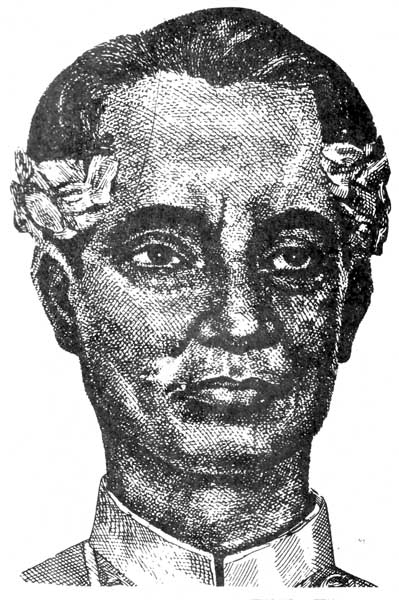Like the majority of Filipinos, I studied in public schools. So, for most of my life and before it became the anthem of cheaters meeting behind the mall, August was a fun-filled month when students wore beautiful, traditional clothes in school, danced folk dances, and listened to two people debating over a topic no one could win.
For us Filipinos, August means Buwan ng Wikang Pambansa, or as we fondly call it, just Buwan ng Wika.
Read more: August is Philippine History Month: What did you do?
About Buwan ng Wika
According to its history, Buwan ng Wika is an expansion of Linggo ng Wika. We used to celebrate Linggo ng Wika from March 27 to April 2 to coincide with the birthday of the Prinsipe ng Makatang Tagalog himself, Francisco Balagtas. The original date changed once before settling on August 13 to 19, which concurred on the birthday of the Father of the National Language, President Manuel L. Quezon. In 1997, President Fidel V. Ramos expanded Linggo ng Wika to a month-long celebration under Proclamation No. 1041.
(It’s interesting that the date moved from March to August because the original date fell on a summer break, and students cannot participate. The pandemic disrupted the school calendar, so public schools will not open until the end of August, and Buwan ng Wika will be almost over.)
This year’s overarching theme is “Filipino at Mga Katutubong Wika: Wika ng Kapayapaan, Seguridad, at Inklusibong Pagpapatupad ng Katarungang Panlipunan.” The celebration also has five sub-themes to be celebrated each week of August.
4 New Ways to Celebrate Buwan ng Wika in 2023
If you’re tired of the usual ways Buwan ng Wika is celebrated in schools (think poster making and essay writing), or if you’re part of the general public who wants to be more involved in this annual observance, here are four fun ways to promote our national language.

Learn Basic Filipino Sign Language
One of the five sub-themes in this year’s Buwan ng Wika is “Pagkilala at Pagtaguyod sa Filipino Sign Language (FSL) bilang Pambansang Wikang Senyas ng Pilipinas,” which we are celebrating on the first week of August.
Even if you’re not deaf or you don’t have loved ones who are, FSL is still a useful and fascinating skill to have. Not only will it be an advantage at work, but more importantly, you can communicate with hearing-impaired Filipinos without needing paper and pen.
Thankfully, there are free basic FSL lessons on YouTube you can start with. There should also be Special Education Centers in selected public schools nearby, so visit one and enlist the help of our learners with hearing disabilities to develop your newfound skills. I’m sure they will welcome people who want to learn their language.

31 Beautiful Filipino Words Challenge
With 130 to 195 languages in the Philippines, we Filipinos will never run out of enchanting words. Post one you love every day for the next 31 days on social media. This is an excellent way to spread the beauty and intricacies of our native languages.
Here are three words I find to be most beautiful in my mother tongue, Tagalog:
- Kita: As in, mahal kita. Unlike “I love you,” where the speaker and the addressee are separate, our kita denotes oneness and the disappearance of the self.
- Tahanan: From the root word tahan, which translates to “stop crying,” tahanan, our home, is meant to be our place of peace and comfort.
- Hanapbuhay: More than a job or work, hanapbuhay is literally a source of living.
As for words from Cebu, where my mom comes from, I love panaghoy (mourning) and tarong (the root word of katarungan or justice).
What are your favorites?

Revisit Florante at Laura
Although Buwan ng Wika does not fall on the birthday of Francisco Balagtas as the original Linggo ng Wika did, we still commemorate the contributions of this Tagalog poet in our national literature. What better way to celebrate Balagtas than by revisiting his popular work: Florante at Laura?
Contrary to what I used to think back in my second year high school, Florante at Laura is not just the story of the titular lovers. Balagtas wrote it while he was in prison, and the masterpiece reflects his day’s injustices and political chaos. With my somewhat-adult lenses, these themes are eerily similar to issues we face today.
Grab a dusty old copy from the local library or watch a stage play where available.

Explore More Filipino Food
There has to be a deeper meaning to why Nutrition Month immediately precedes Buwan ng Wika. It must be because July is all about food, and food is the language of love, right?
Okay, I’m pushing it. On a serious note, why not take this opportunity to try more regional dishes? Food can be a great introduction to a region’s rich history and culture, including its language.
For instance, did you know that pinakbet comes from an Ilokano word that means “shriveled”? Did you also know that what we call laing is actually called pinangat in Bicol where it originated from? And are you never confused why all kinds of rice cakes are collectively called puto in Bulacan while puto is just one type of kakanin elsewhere? Whew! There is so much to learn from the names of the food alone. Thankfully, we also have so much food to know about!
